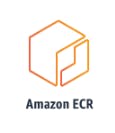🌐AWS 07-Days Challenge, Day-06
🌟Amazon Elastic Container Service (ECS)?

A fully controlled container orchestration solution provided by Amazon Web Services (AWS) is called the Amazon Elastic Container Solution (Amazon ECS).
Using Docker containers streamlines the deployment, scaling, and management of containerized applications. With ECS, developers can concentrate on developing code as AWS handles the underlying infrastructure, eliminating the need for manual infrastructure provisioning. For companies looking for a dependable and scalable way to launch container-based apps in the cloud, this is a great option.
Amazon ECS is made up of three distinct layers:
Capacity: It’s the infrastructure that your containers need to run
Controller: Responsible for the deployment and management of your apps that run on the containers
Provisioning: This includes the tools that you can use to interface with the scheduler to deploy and manage your applications and containers
The Amazon ECS capacity can be managed in a number of different ways, some of which are mentioned below.
Amazon Cluster: Amazon will allow clusters**, allowing** you to have one or more clusters depending upon the capacity needed for you. Amazon clusters will isolate or group the resources, like Amazon EC2 or forget, which will allow you to run your containers.
Fargate: Containers can be run using AWS Fargate, which allows you to focus on your code rather than the underlying infrastructure. It will help you deploy the application in the form of containers without managing the EC2 instance.
Integrate: Amazon ECS will allow you to integrate the on-premises server or virtual machine with the Amazon ECS cluster.
AutoScaling: Amazon ECS supports autoscaling, in which the containers will scale up and down depending on the incoming traffic. If the traffic is high, then Amazon ECS will scale up the containers, and if there is minimal traffic, then Amazon ECS will scale down the containers.
🛠️What is the Elastic Container Registry?

Amazon Web Services offers a container registry service called AWS ECR. Its purpose is to make the deployment, administration, and storage of Docker container images safe, scalable, and effective.
Tools that integrate with Amazon ECR
1.Docker
2.Kubernetes
3.AWS IAM
4.Amazon EKS
5.WhiteSource
6.Trivy
7.FeaturePeek
Pros of Amazon ECR
Highly secure as policies can be configured to manage
Nothing to pay up advance or obligations
Easy to use
Amazon ECR's Features
Reduce your effort with a fully managed registry
Securely share and download container images
Provide fast and highly available access
Simplify your deployment workflow
WHAT ARE SOME ALTERNATIVES TO AMAZON ECR?
Docker Hub
It is the world's easiest way to create, manage, and deliver your team's container applications. It is the perfect home for your team's applications.
Kubernetes
Kubernetes is an open-source orchestration system for Docker containers. It handles scheduling onto nodes in a compute cluster and actively manages workloads to ensure that their state matches the users declared intentions.
Harbor
Harbor is an open-source, native registry that stores, signs, and scans container images for vulnerabilities. Harbor solves common challenges by delivering trust, compliance, performance, and interoperability. It fills a gap for organization
Simply upload your Dockerfile (and any additional files it needs) and we'll build your Dockerfile into an image and push it to your repository
🌐What is Amazon Route 53?

AWS Route 53 is a scalable, highly available DNS web service that routes end users to internet applications by translating domain names into IP addresses. Named after the port number 53 used for the DNS protocol, it offers features like domain registration, routing policies, health checks, and traffic management.
Key Features and Benefits:
Domain Registration: Route 53 allows users to register domain names directly within the AWS Management Console, providing a seamless experience for managing domains alongside other AWS services.
DNS Management: With Route 53, users can create and manage DNS records such as A, AAAA, CNAME, MX, TXT, and more, enabling flexible configuration for routing traffic to resources hosted on AWS or external endpoints.
Traffic Routing Policies: Route 53 offers a variety of routing policies, including simple routing, weighted routing, latency-based routing, geolocation routing, and failover routing, allowing users to optimize performance, availability, and failover resilience for their applications.
Health Checks: Route 53 health checks monitor the health and performance of endpoints, such as EC2 instances, ELB load balancers, and S3 buckets, and automatically route traffic away from unhealthy endpoints to healthy ones.
Global Coverage: With a distributed network of DNS servers located worldwide, Route 53 ensures low-latency and high availability for DNS queries from any location, making it suitable for global applications and content delivery.
How does the AWS Route 53 service work?
First, the domain name is registered with AWS Route 53 or any other domain registrar. After that, the servers hosting the domain name are set up to receive Internet traffic.
End users type the entire URL or the domain name into the search box of their browser.
A DNS resolver, a device that translates a domain name into its IP address, receives the request from the ISP.
The user request is thereafter forwarded by the DNS resolver to a DNS root name server, which subsequently routes it to its Top Level Domain (TLD) server and, finally, to AWS Route 53.
The DNS resolver receives the IP address of the domain name from the Route 53 authoritative name server.
The DNS resolver can now send the user request to the relevant server hosting the content in accordance with the AWS Route 53 service parameters, as it has the necessary IP address.
Conclusion:
Amazon ECS, Amazon ECR, and Amazon Route 53 are crucial AWS ecosystem components that provide robust solutions for container orchestration, container image management, and DNS routing. These services enable businesses to build, deploy, and scale modern applications efficiently in the cloud. To maximize their benefits, businesses should explore their features, experiment with configurations, and follow best practices. These trusted allies help navigate containerized application deployment and DNS management in the AWS cloud.
Kindly feel free to ask any queries in the section below. I'd be pleased to respond to them.
Please follow and use the heart❤❤ button below to express your support if you think this content is helpful 😊.
I appreciate you taking the time to read.